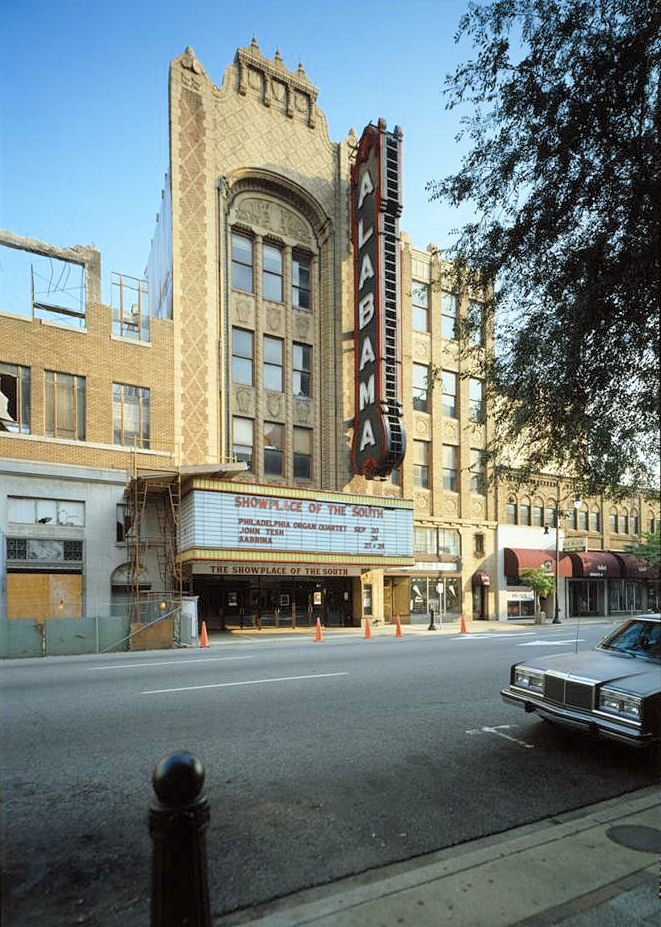Alabama Theater, Birmingham Alabama

The Alabama Theatre, designed by Chicago architects Graven & Mayger, was erected in 1927 by Paramount's Publix Theatre chain as its flagship theatre for the southeastern region of the United States, and is among the finest theatres of the period in the southeast. Originally seating 2,500, it accommodated both live theatre, and movieplays accompanied by the Wurlitzer Organ.
The Alabama Theatre was the crown jewel of the Birmingham Theatre district. At one time, these streets were lined with large theaters featuring everything from vaudeville to performing arts, nickelodeons to large first-run movie palaces. Hugh marquees lit the streets at night and billboards advertised the current attractions. The "Alabama" is the only theater still operating today; only one other, the Lyric Theater, still stands.
The original proposed drawings were dated October 28, 1926. However, factors such as the unavailability of needed property, and a change in ownership resulted in revisions to the plans, dated April 9, 1927 the same day construction began. The theatre opened December 26, 1927.
When the theater opened in 1927, food and drink were not allowed inside. The first concession stand was placed at the corner of the Eighteenth Street facade and the alley. Theater goers bought peanuts and popcorn here, but not drinks. The concession stand had a cast iron window frame and an outside entrance only. The concessionary later became a rear entrance, with wood doors matching those of the stage entrance. During the 1940s, another concession stand was installed in a vestibule to the right of the ticket booth, a position typical of theater designs of that era. It was strategically placed to attract the general public by offering refreshments to patrons and passersby alike. More recently, an area used for phone booths at the balcony level was re-adapted for use as a concession area for special events.
The sign was remodeled and replaced in 1957. Erected in May 1960, a new marquee replaced the old-fashioned screw-in light bulbs with new neon-tube lighting. Initially, the 1927 building had an Alabama sign on the Eighteenth street facade to matched the front. Other changes to the front facade include the modern commercial glass and metal frame doors which were added in 1987, displacing the original 1927 "golden" doors at the Third Avenue entrance. The ticket booth entrance was enclosed in 1987. Brass railings lined up in front of the ticket booth to channel the crowds, and in the grand lobby directed people into the auditorium. Subsequently removed, these railings were reused along the stairway to the basement lounge.
In 1972, the interests of modernization generated a few more alterations. Acoustical material replaced the stage draperies. The main floor seats were replaced with modern seats which allowed for more leg room. This exchange reduced the seating capacity from 2,500 to 2,210, as did the addition space required by the new sound and light boards in the rear of the auditorium. New red carpet replaced the old in the auditorium, foyer, and mezzanine.




